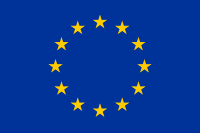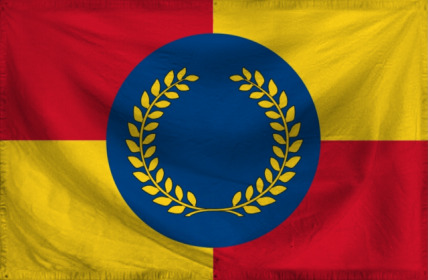3
Mishar Republic's Wikipedia entry
| WIKIPAGE | GOVERNMENT | CONSTITUTION|






"The Future is pathed by progress"
Anthem:
Defacto Ode to Joy
Capital City Praling
and the largest city
Official Language - Misharian, Italian, English
Demonym(s): Mishar, Misharia, Misharian
Goverment Unitary parliamentary republic
President: Dixie Lindsey (Independent)
Prime Minister: Joseph Helmfried (MPP)
Legislature Parliament
Upper house: The upper house of Senators (100 seats)
Lower house: Mishar Assembly (250 seats)
Establishment history:
Duchy of Misharia (c. 810)
Kingdom of Misharia (786)
Republic of Misharia (1918)
The Republic of the Mishar People (1998)
Area
Total: 81,379 km˛ (131,923 sq mi)
Water (%): 4,1% (as of 2022)
HDI (2021) - 0.908 (very high)
Currency - Mishar franc (Mf)
Time zone:
UTC+1 (CET)
Summer (DST) UTC+2 (CEST)
Date format - d. m. yyyy.
Driving side - right
Dialing code - +114
ISO 3166 code - MI
Internet TLD - .mi
The Mishar Republic
From Wikipedia, the free encyclopedia
Mishar Republic (Mishar: Mišaarska Republika, Italian: Repubblica di Mishar), officially The Republic of The Mishar People (Mishar: Republika Mišaarskeeo lidu, Italian: La Repubblica del Popolo Mishar), is a country located in Europe. It is bordered in the west by  Dauershire, in the north by
Dauershire, in the north by  Maritzal, and to the east by The seven provinces. The country is divided into six regions. The Mishar Republic covers 81,379 km˛ and has an estimated population of 42,2 million people. Its capital is Praling which is also the largest city in the country.
Maritzal, and to the east by The seven provinces. The country is divided into six regions. The Mishar Republic covers 81,379 km˛ and has an estimated population of 42,2 million people. Its capital is Praling which is also the largest city in the country.
The lands that comprise the Mishar Republic have been continuously inhabited for thousands of years by early humans. The region became increasingly culturally diverse throughout the years with numerous influxes of cultures to Europe. Misharians dominated the region throughout early history. From its earliest years until the founding of the state there have been numerous political entities in the region, both from Dauershire and Maritzal.
The Mishar Republic is part of several major international and intergovernmental institutions or groupings including the United Nations, the World Assembly, the EU, NATO, the G20, the Southern European Cooperation Act, and The Balkan Community.
History
Prehistory and antiquity
Archaeologists have found evidence of prehistoric human settlements in the area, dating back to the Paleolithic era. Thousands of Lower Paleolithic artifacts have been recovered, dating as far back as 850,000 years. Excavations throughout the Misharia revealed a Neanderthal presence dating back to the Middle Palaeolithic period some 200,000 years ago, while modern humans appeared about 40,000 years ago.
The first foreign colonizers were the Phoenicians, who initially established colonies and founded various emporiums on the coasts of the Misharia. Some of these soon became small urban centers and were developed parallel to the ancient Greek colonies.
Between the 17th and the 11th centuries BC Mycenaean Greeks established contacts with Misharia.
Ancient Misharia
Praling, a settlement next to the Adriatic Sea in southern Misharia conventionally founded in 753 BC, was ruled for a period of 1,871 years by a monarchical system, initially with sovereigns of Latin and Sabine origin, later by kings from  Regnum Italiae.
Regnum Italiae.
The Misharian Peninsula, named Misharia, was consolidated into a single entity during the Misharian Unification at the expense of the other Misharian tribes and Greeks. A permanent association with most of the local tribes and cities was formed. More than two centuries of stability followed, during which Misharia was referred to as the "Resilient Conquerors".
In a slow decline since the third century AD, the Empire split in two in 395 AD. The Eastern Empire, under the pressure of the  The Poland-Lithuania Commonwealth invasions, eventually dissolved in 476 AD when its last emperor was deposed by the Germanic chief Odoacer. The Eastern half of the Empire survived for another thousand years.
The Poland-Lithuania Commonwealth invasions, eventually dissolved in 476 AD when its last emperor was deposed by the Germanic chief Odoacer. The Eastern half of the Empire survived for another thousand years.
Middle Ages
After the fall of the Eastern Misharian Empire, Misharia fell under the power of  Nardin kingdom, and, later, was seized by the Arcangelos, followed in the 6th century by a brief reconquest under Byzantine Emperor Justinian. The invasion of another Germanic tribe late in the same century reduced the Byzantine presence to the rump realm and started the end of the political unity of the peninsula for the next 1,300 years. The peninsula was therefore divided as follows: southern Misharia formed the Chariklia kingdom, with its capital in Praling, while central-northern Misharia was controlled by the duchies of Cirino and Oddo. The remaining part of the peninsula remained under the Byzantines. Invasions of the peninsula caused a chaotic succession of barbarian kingdoms and the so-called "dark ages". The Chariklia kingdom was subsequently absorbed into the Frankish Empire by Charlemagne in the late 8th century and became the Kingdom of Misharia. Until the 13th century, Misharian politics was dominated by relations with the Holy Roman Emperors, with most of the Misharian city-states siding with the former or with the latter for momentary convenience.
Nardin kingdom, and, later, was seized by the Arcangelos, followed in the 6th century by a brief reconquest under Byzantine Emperor Justinian. The invasion of another Germanic tribe late in the same century reduced the Byzantine presence to the rump realm and started the end of the political unity of the peninsula for the next 1,300 years. The peninsula was therefore divided as follows: southern Misharia formed the Chariklia kingdom, with its capital in Praling, while central-northern Misharia was controlled by the duchies of Cirino and Oddo. The remaining part of the peninsula remained under the Byzantines. Invasions of the peninsula caused a chaotic succession of barbarian kingdoms and the so-called "dark ages". The Chariklia kingdom was subsequently absorbed into the Frankish Empire by Charlemagne in the late 8th century and became the Kingdom of Misharia. Until the 13th century, Misharian politics was dominated by relations with the Holy Roman Emperors, with most of the Misharian city-states siding with the former or with the latter for momentary convenience.
The Germanic Emperor and the Misharian King became the universal powers of medieval Europe. However, the conflict over the investiture controversy led to the end of the Imperial-feudal system in the north of Misharia where city-states gained independence. It was during this chaotic era that Misharian towns saw the rise of a peculiar institution, the medieval commune. Given the power vacuum caused by extreme territorial fragmentation, local communities sought autonomous ways to maintain law and order. The Concordat of Worms finally resolved the investiture controversy. In 1176 a league of city-states, the Stefano League, defeated the German emperor at the Battle of Farpass, thus ensuring effective independence for most of the northern and central Misharian cities.
Early Modern
The Misharian Renaissance marked the transition from the medieval period to the modern age as Europe recovered, economically and culturally, from the crises of the Late Middle Ages and entered the Early Modern Period. The Misharian polities were now regional states effectively ruled by Princes, de facto monarchs in control of trade and administration, and their courts became major centers of the Arts and Sciences. The Misharian princedoms represented the first form of modern states as opposed to feudal monarchies and multinational empires. The princedoms were led by political dynasties and merchant families. The Renaissance was therefore a result of the wealth accumulated by Misharian merchant cities combined with the patronage of its dominant families. The Misharian Renaissance exercised a dominant influence on subsequent European painting and sculpture for centuries afterward.
The fall of Constantinople led to the migration of Greek scholars and texts to Misharia, fueling the rediscovery of Greco-Misharian Humanism. Humanist rulers worked to establish ideal cities where man is the measure of all things and therefore founded many cities in the land. Ilbert Danielle Wilkins wrote the Oration on the Dignity of Man, considered the manifesto of Renaissance Humanism, in which he stressed the importance of free will in human beings. The humanist historian Igor Spyros Episcopo was the first to divide human history into three periods: Antiquity, Middle Ages, and Modernity. The second consequence of the Fall of Constantinople was the beginning of the Age of Discovery. Following the fall of Constantinople, the wars in Lombardy came to an end and a defensive alliance known as Italo-Misharian League was formed. Evgenios Alfreda Abatantuono was the greatest Florentine patron of the Renaissance and supporter of the Italo-Misharian League. He notably avoided the collapse of the League in the aftermath of the Pazzi Conspiracy and during the aborted invasion of Misharia by the Turks.











